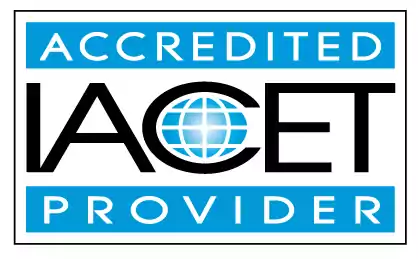Demonstrate appropriate/effective responses as they relate to a variety of typical child care scenarios.
Demonstrate appropriate/effective responses to typical child care scenarios aligned with Child Care Regulations, promoting a safe and nurturing environment. Our page provides solutions and strategies for early childhood education and child care centers.Trainings incorporating this outcome
Proficiency Level
120 hours courses
45 hours courses
Related Outcomes
- Demonstrate understanding of strategies in responding to typical child care situations: biting, hitting, etc
- Demonstrates understanding of an appropriate family child care curriculum
- Demonstrate understanding of the roles and responsibilities of an administrator in a child care program.
- Demonstrate understanding of developing strategies for involving parents in the child care setting.
- Demonstrates understanding of the ADA and how it applies to family child care homes
- Demonstrate an understanding of the overall cost of child care
- Identify the different types of portfolios used in child care programs, and the appropriate portfolio components for each type.
- Describe strategies and experiences to promote collaboration between child and youth care professionals and programs and other professionals involved in the care and education of all children and youth.
- Demonstrate understanding of optimal room arrangements for family child care settings and their components.
- Give examples of strategies in responding to typical child care situations.
- Identify factors that may influence learning for a child in the family child care environment.
- Demonstrate understanding of inclusionary practices for conduct disorder in the child care setting.
- Identify appropriate practices communicable diseases/illnesses and immunizations and their schedules in child care setting
- Demonstrate understanding of inclusionary practices for cerebral palsy in the child care setting.
- Demonstrates an understanding of content areas and how they relate to child development
- Demonstrate understanding of developing positive relationships with child care families
Related Articles
- Get CDA Certified: Family Child Care Credential Made Easy!
- Alaska Child Care and the CDA Credential
- The CDA Credential: A Game-Changer for Child Care Providers in North Dakota
- Creating Effective Child Portfolios in Early Childhood Education
- How to Obtain Your CDA Credential as a Child Care Provider in Tennessee
- How Georgia Child Care Providers Can Use the DECAL Scholars Program to Earn their CDA
- How to Obtain Your CDA Credential as a Child Care Provider in Michigan
- Improving Your Skills as a Child Care Director
- The CDA and Child Care Industry
- Understanding the CDA Credential: A Guide for Child Care Providers
- CDA Certification for Maryland Child Care Providers
- Becoming a Child Care Teacher in Massachusetts: How the CDA Credential Can Help
- I don't currently work in child care, can I still earn a CDA Credential?
- CDA Family Child Care Credential with Portfolio Review
- Finding Funding to Obtain the CDA Credential for Child Care Providers
- How Indiana Child Care Providers Can Benefit from the CDA Credential
- Key Competencies and Functional Areas for Child Development Associate (CDA)
- Managing an Effective Program Operation in Childcare
- CDA and Child Health and Nutrition
- CDA Credential Supports Child Development and Learning
 12 CEUs
12 CEUs